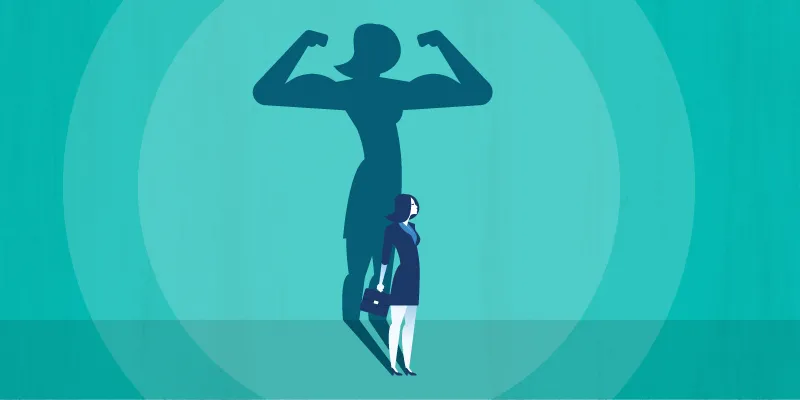How reboot programmes help Indian women get back after a career break
The debate on work-life balance will continue ad infinitum, but it’s heartening to note that women are finding returning to work after a career break easier as companies take proactive steps to tap their talent.

Women’s contribution to India’s GDP stands at 18 percent, one of the lowest in the world, reflecting the fact that only 25 percent of India’s labour force is female. More than 70 percent of the potential GDP growth opportunity comes from increasing women’s participation in the labour force by 10 percentage points, according to McKinsey Global Institute’s report published in April this year, The power of parity: Advancing women’s equality in Asia-Pacific.
According to the report, the India has one of the largest opportunities in the world to boost GDP by advancing women’s equality — $770 billion of added GDP by 2025 — but this would require comprehensive change.
Corporates too have now better understand the value of bringing more women back to the workplace and know that this will not only contribute to the country’s GDP in the long run but also help their own diversity initiatives.
But how does one move from theory to practice - actually getting women in the workplace? What can companies do to increase the number of women in the workforce?
What women want
When women talk about restarting their careers, innovative platforms like Reboot India, JobsForHer, and corporate entities are listening.
JobsForHer followed up a survey conducted across Bangalore, Delhi and Mumbai with over 2500 respondents, with a report titled, Time to Talk - A Journey into What Women in India Want While Restarting Their Careers.

Fifty-seven percent of the women saw mentoring as crucial to their restart, in the survey on How Important is Mentoring To You?
Tina Vinod, Head of Diversity & Inclusion, ThoughtWorks, creative technology consultants, says:
“Women are subject to microaggressions at work, where casual instances of hostility or indifference take place. More so for women who leverage flexible working styles or policies. Ours is still largely a patriarchal society that deems a certain kind of behaviour on women. There is still a long way to go for women to break moulds, or the glass ceiling.”
Hiring managers need to let go of implicit biases that women tend to be distracted by childcare responsibilities or cannot put in long hours to meet a deadline. These make the outcomes for the talent pool of women returning to work less than favourable.
Making it easy for women to return
Taking all this into account, companies are working on policies that will help women to return to work, not feel out of place, and grow and rise. Some of the companies we spoke to told us how they were reworking existing policies or formulating new ones to bring women back to work.
However, it is important to highlight that what works for corporates doesn’t necessarily work for startups.
Most often, startups with small teams, budgets, and more work find it difficult to manage without an employee who has taken a maternity break.
Ishani Roy, Founder, Serein Inc,- a team of scientists and sociologists who are passionate about driving better business outcomes through diversity.
She admits that the mandated six months of maternity leave deters some startups from hiring women of a particular age/demographic.
“In case they do hire on the basis of merit, they do not discriminate (in terms of projects etc.) when those employees come back to work. Startups are quite good at pay equity so returning women do not get penalised for the break in their career as is often the case in corporates. Again, one of the big challenges for a growing startup is finding good talent. Since startups are focused on skill they can actually look at returning mothers as a great talent pool,” Ishani says.
Corporates get to work
To assuage some of the fears and guilt surrounding “return to work”, companies are taking the whole work-life balance ratio very seriously.
Many have launched programmes that enable women to upskill after having taken a break and provide them with facilities that help them manage their home situations as well as work. These include flexi-timings, remote working facilities, access to healthcare, feeding rooms, safer commutes, among others.
PayPal’s back-to-work programme, Recharge, is designed to help women technologists in India jumpstart their return to the workplace with the confidence and skills that will make them trailblazers in the industry.
“At the end of the programme, we aim to give some of these women the opportunity to work with us and build next-generation payments across roles such as software development engineer, software development test engineer, software development manager, release engineer, and risk analyst. This is apart from other women-specific initiatives to increase the number of women in the organisation and the industry,” says Jayanthi Vaidyanathan, Senior Director, HR, of online payments system Paypal India.
If change is to happen, work cultures need to be more inclusive of women by easing the re-entry process.
Tina talks about ThoughtWorks’ Vapasi, a structured technical programme that gives women technologists “a platform to re-define their (post-break) career paths, connect and identify with role models, exchange experiences, and support each other in becoming active members of the tech community”.
Richard Lobo, Head of HR and Executive Vice President at Infosys, talks of a two-pronged approach - childcare support and workplace support - to make workplace integration possible for new mothers.
“Workplace support includes the Mom’s Net infrastructure that has become synonymous with support for expecting and new mothers, offering them a conducive environment and infrastructure to return to work effectively,” he says.
More recently, the company launched #BackLikeABoss, a returnee internship programme. “The six-month internship prior to role fitment and hiring gives women the space to explore their interests and strengthen their competencies while working on the job. The candidate will be shortlisted mainly based on the primary skillsets and years of experience. At the point when we convert them into the roles of the company, we will follow the regular process of lateral hiring,” Lobo adds.
Similarly, the Intuit Again programme at Intuit India, a financial software company, provides an opportunity for technologists to return to work after taking a break in their career for caregiving purposes.
“Through this programme, we take them through a six-month internship to rebuild skills and confidence, enabling them to successfully return to the workforce. Several women participants of this internship programme have been offered full-time roles with Intuit. Today, 10 percent of the women hires at Intuit India are through the Intuit Again programme,” says Saket Atal, Managing Director, Intuit India.
Onwards with more vigour
What becomes imperative in the changing scenario is for women to understand that motherhood or any type of caregiving is not a penalty. With many companies offering return programmes, upgrading to new skill sets has become easier.
But that alone is not enough to make the transition, says Mukta Sharma, Assistant Manager, Outreach Partnerships, NSRCEL, IIM-B. Mukta has taken many breaks during her career, and JobsForHer helped her find her current position.
“I guess the challenges are more internal than external. While external boundaries are always defined, it’s about whether you internalise those boundaries or think beyond. I always think of ‘infinite possibilities’. The day I decided to look beyond the boundaries I had thought existed, the walls kept falling and I kept moving ahead. While one might be a ‘lone crusader’, it’s important that you create a support system of family and friends who understand you as a person and help you move ahead. Suggest the path/opportunities that exist, what and how you could manage in terms of role, etc. You definitely need someone who believes in you and your capabilities. I have been working in breaks for over a decade, so it was always ‘what will I do next’?” Mukta says.
She adds that women should focus was on utilising their capabilities and skills, the areas of work they can explore, and their strengths. “We should see what value and impact we can create in any role/assignment that continues to build our credibility to ensure one gets repeat assignments from a company."
Jhanvi Chintakunta, a technologist with nine years experience, and on a three-year career break had to say this about ThoughtWorks’ Vapasi programme,
“I found myself not particularly well versed with current technology, since my career break. I took up a few certification courses to solve that problem, but the lack of hands-on experience with the new tech became a problem when I would sit for interviews. Which is also why I was really sceptical about getting selected for the Vapasi programme. But, I did and was overwhelmed and excited because I truly believe the programme is a great value add to my resume.”
Read the first part here and the second here.
If you're a woman and an entrepreneur, help us compile a directory of women-led businesses in India by taking this quick survey.







